イベント
JSTQB カンファレンス in 2010「ISTQB world trend reports」
JSTQB カンファレンス in 2010「ISTQB world trend reports」
JSTQB カンファレンス in 2010 「ISTQB world trend reports」は、おかげさまでチュートリアルおよびセッション合わせて150人を超える方にご参加を頂き、盛況のうちに開催を終了いたしました。 多くのご参加を誠にありがとうございました。
プログラム
※資料は講演者から掲載を許可を頂いたもののみ掲載しております。 ご了承ください。
プログラム概要
チュートリアル
Process, Project, and Product Metrics for Testing
テストのためのプロセス、プロジェクト、プロダクトメトリクス
- Rex Black
(Rex Black Consulting Services, Inc. President)
http://www.rbcs-us.com/
書籍「基本から学ぶテストプロセス管理」、「ソフトウェアテスト12の必勝プロセス」などの著者 - How can we use metrics to manage testing? What metrics can we use to measure the test process? What metrics can we use to measure our progress in testing a project?
What do metrics tell us about the quality of the product? In this tutorial, you will learn some options for metrics that you can put to work right away.
テストをマネジメントするのにどのようにメトリクスを活用することができるでしょうか? テストプロセスを測定するのにどのメトリクスを活用することができるでしょうか? プロジェクトの中でテストの進捗を測定するのにどのメトリクスを活用することができるでしょうか? プロダクトの品質に関して、メトリクスが何を私たちに示すでしょうか? このチュートリアルにて、正しく仕事を進めるためのメトリクスについてどのようなものがあるかを学んでください。



セッション1
IEEE829:2008 a major shift of focus
IEEE829:2008の主要な変更点
- Bernard Homes
(Principal consultant TESSCO Technologies inc)
http://www.cftl.net/
ソフトウェアテストのコンサルティングを行う仏TESSCO Technologiesの創立者であり、プリンシパルコンサルタントとして活躍しています。またソフトウェアテストのドキュメントの標準であるIEEE829:2008の策定にも携わっています。 - The new version of the IEEE829 effectively bridges the gap between large and small organizations, methodical and exploratory testing, while keeping in mind the different methods associated with testing.
Test documentation is the base of all the future tests for a SW applications and systems. It is a contract between the test, the management and the development teams.
The previous version, IEEE829:1998 was focused on documentation, and detailed the strategy to be used for testing in order for :
- Management to understand the added values of the tests and the remaining risks, the costs and requirements as well as the time frame,
- Development team to focus on the areas that are most critical or where a required level of quality has been set,
- Test team to develop and execute the test campaigns in order to reach the goals on time and within budget,
- Test project manager to have a reference document to keep the project on course and on budget.
This current IEEE829:2008 version focuses on the documentation associated to the processes, and the processes required to test the software or system depending on the criticality of the software. The presentation describes the different documents in the IEEE 829 standard and their relations to one another.
Building on this information it details the different steps and aspects of the test plan as described in the standard and the relations between the different chapters, how they complement each other in order to provide a complete solution.
The new version of IEEE829 was published in 2008 and introduces a number of major changes, one of which is the change of focus from a document centric standard to a process centric standard.
This presentation - by one of the authors of the standard - allows you to map the changes from the old version, and provides ways for you to implement the new version of the IEEE829:2008 standard in your organization.
IEEE829の新しいバージョンは、2008年に発行され多くの変更が入りました。その1つはドキュメント中心の規格からプロセス中心の規格へと視点が変化したことです。 また、組織の大小やテストの進め方(方法論的なやり方や探索的なやり方)のギャップを埋める懸け橋を提供しています。このプレゼンテーションでは、本規格の作者である講演者から古いバージョンとの変化点をマッピングして、 IEEE829の新バージョンを組織に実装する方法をご説明し ます。

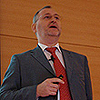

セッション2
Learn how TMM made a 96% defect detection rate possible
TMMはいかにして96%の欠陥検出率を可能にしたか
- Klaus Olsen
(CEO of Softwaretest.dk,Board member of TMMi Foundation)
http://www.softwaretest.dk/
- Learn how Test Maturity Model, TMM made a 96% defect detection rate possible, and get introduced to TMMi, Test Maturity Model Integration.
This presentation also contains a case study of how a customer worked with TMM and how the TMM level is measured,
what result an assessment is able to detect, and how an improvement plan can be created to improve the software test process, and the effectiveness of your testing in the long run. 4 key points:
1. Summary of TMM and TMMi
2. Differences from TMM to TMMi
3. How you can use TMMi
4. Future Road map of TMMi
TMM(テスト成熟度モデル)が、いかにして96%の欠陥検出率を可能にしたのか、そしてTMMiの導入についてご紹介します。またこのプレゼンテーションでは、どうTMMのレベルを計測し結果を評価しているか、 どうテストプロセスを改善するための計画を作るか、長期的な視点で見た改善効果について事例を紹介いたします。
4つのキーポイント:
1:TMMとTMMiの概要
2:TMMからTMMiの違い
3:TMMiの活用方法
4:TMMiのロードマップ
セッション2 資料 (PDF/369KB)



セッション3
HAYST法を用いたソフトウェアテスト
- 秋山 浩一
(富士ゼロックスアドバンストテクノロジー株式会社 評価技術開発統括部)
書籍「ソフトウェアテストHAYST法入門 品質と生産性がアップする直交表の使い方」の著者 - テストライフサイクル全体に対して、HAYST法はどのようなアプローチをとっているかについて解説します。特に、HASYT法の核となる組合せテストにおいて、その基本的な考え方および技法について説明します。
最後に、HAYST法のスケーラビリティ(適用可能なテスト規模)とその効果について報告します。
セッション3 資料 (PDF/2,364KB)
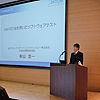

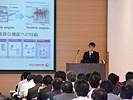
セッション4
Panel discussion
世界のソフトウェアテスト最前線
- ・パネリスト
- Rex Black
(RBCS)
<講師略歴はチュートリアルをご参照ください> - Bernard Homes
(TESSCO Technologies inc)
<講師略歴はセッション1をご参照ください> - Klaus Olsen
(Softwaretest.dk,TMMi Foundation)
<講師略歴はセッション2をご参照ください> - 大西 建児
(ガイオ・テクノロジー株式会社)
書籍「ステップアップのためのソフトウエアテスト実践ガイド」著,「ビューティフルテスティング」監訳 - ・コーディネータ
- 石井 勇一
(NECラーニング株式会社) - 湯本 剛
(日本ヒューレット・パッカード株式会社) - ISTQBメンバーをパネリストに迎えて、各国のソフトウェアテストに対する取組みの状況を話していただきます。
それをふまえたうえで、これからのソフトウェアテスト技術者に求められる行動やスキルについて提言していただきます。
セッション4 資料 (PDF/2,596KB)

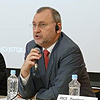
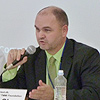
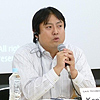
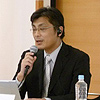
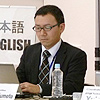
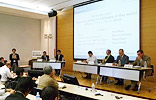
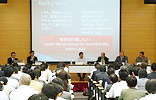
開催要項
| 日時 | 2010年10月14日(木) | |
|---|---|---|
| 場所 |
東京ステーションコンファレンス サピアタワー5F (東京都千代田区丸の内一丁目7番12号 サピアタワー) |
|
| 主催 |
特定非営利活動法人 ソフトウェアテスト技術振興協会 (ASTER) Japan Software Testing Qualifications Board (JSTQB) | |
| 参加費 | |||
| 1日セッションコース | AMチュートリアル+ PMセッションコース |
||
| FL資格保有者先行価格 | 1,050円(税込) | 2,100円(税込) | |
| 一般参加者価格 | ------ | 8,400円(税込) | |

